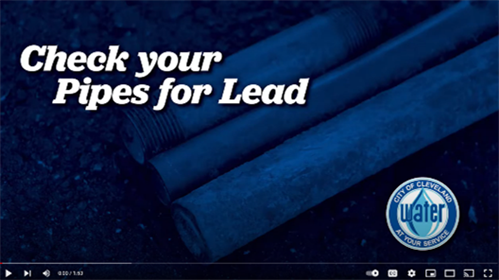Water Quality: Lead in Drinking Water
INFORMATION ABOUT LEAD IN DRINKING WATER
BMID and our regulator Interior Health agree that there is no known safe level for lead in a child’s blood. Lead is harmful to health, especially for children. The current Health Canada limit is set at 0.005 mg/L (five parts per billion), however it includes the caveat that every effort should be made to maintain lead levels as low as reasonably possible. Taking action to reduce exposure to lead can improve outcomes.
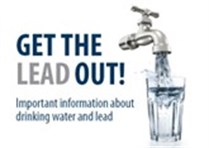
Canadian Water and Wastewater Association LINK: Fact Sheet on Lead
The comprehensive Technical Guideline Document on Lead from Health Canada can be found at the link below. The document has information on the limits for lead, the health effects and paths for exposure to lead, and means for analysis and treatment.
Health Canada LINK: Guideline Technical Document - Lead
Raw Water Lead Content
Black Mountain Irrigation District has tested our water sources and has not detected lead in our surface water source which is Mission Creek. For years we also had no measurable level of lead in our groundwater wells. Only recently has there been the ability of the testing laboratories to measure lead to levels below 0.001 mg/L (1 part per billion). In the past two rounds of testing, we have detected very low levels of lead in our groundwater sources at Well 4 and Well 5. The detected amount there is 0.00025 mg/L or 0.25 parts per billion. Although this is significantly below the 5.00 parts per billion Maximum Acceptable Concentration as set out by Health Canada, lead is still present. Well 4 and 5 provide water to our customers in Scotty Creek subdivision and along Old Vernon Road.
Where Lead May be Present In the Water Supply
Although lead was not detected in the Mission Creek source, lead still may be present within buildings. The most common source of the lead is typically due to the building plumbing. Please click on the link to review the infographic prepared by the USEPA in 2017. This document illustrates that there are many potential places from where lead can originate.
EPA INFOGRAPHIC LINK: Lead in Drinking Water (PDF)
BCWWA INFOGRAPHIC LINK: Lead in Drinking Water (PDF)
Lead historically was used in plumbing fixtures and in lead solder for joining copper pipes. Lead was malleable, was easy to mold and work with and was stable, i.e. did not corrode easily. Lead was discontinued in copper solder in Canada in 1990.
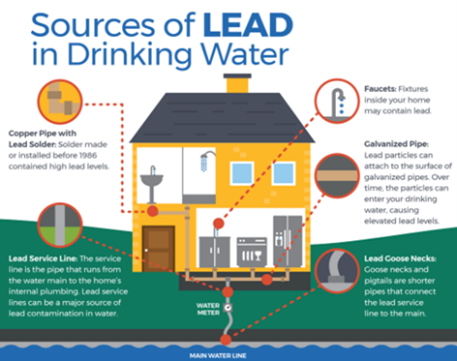
How Lead Gets into Drinking Water
Lead can enter drinking water when plumbing materials that contain lead corrode, especially where the water has high acidity or low mineral content that corrodes pipes and fixtures. The most common sources of lead in drinking water are lead pipes, faucets, and fixtures. In homes with lead pipes that connect the home to the water main, also known as lead service lines, these pipes are typically the most significant source of lead in the water. Lead pipes are more likely to be found in older cities and homes built before 1986. We are unaware of any lead service lines in the BMID service area. There are ways to check if the service line is lead. See the attached video to check your service pipes.
“How to know if you have Lead Plumbing”
Produced by Cleveland Water Utility.
If you find that you have a lead service line or lead pipes in your home, please contact our office.
Among homes without lead service lines, the most common problem is with brass or chrome-plated brass faucets and plumbing with lead solder.
LINK: How to identify Lead-Free certification marks on drinking water system and plumbing fixtures (PDF)
BMID has no authority regarding plumbing on private property. To manage the risks associated with lead, it requires a partnership between the utility and the customer. The utility must provide safe water that is stable (not corrosive) and inform the customer that risks must be present.
Corrosion is a dissolving or wearing away of metal caused by a chemical reaction between water and your plumbing. A number of factors are involved in the extent to which lead enters the water, including:
- the chemistry of the water (acidity and alkalinity) and the types and amounts of minerals in the water,
- the amount of lead it comes into contact with,
- the temperature of the water,
- the amount of wear in the pipes,
- how long the water stays in pipes, and
- the presence of protective scales or coatings inside the plumbing materials.
How to I test to determine if I have lead in my drinking water??
Drinking Water Test Kit: For sample bottles and test kit information See link at Caro Labs
Cost for test kit $75.00. Order on-line or pick up at their office at the below address:
Caro Labs – Kelowna
#102 – 3677 Highway 97N
Kelowna, BC, V1X 5C3
Phone (250) 765-9646
Hours 8am-5pm Mon-Friday, Saturday 9am-4pm
LINK: https://store.caro.ca/product/lead-water-testing-kit/
BMID is working with Interior Health and Caro Labs to develop a standardized process and develop a reduced testing fee (< than current $75.00/sample).
Draft Process for In-House Testing at your Tap
To ensure that you are getting a representative test sample for lead, following are recommended steps to be taken by the customer. Please note that the testing cost increases with each tap to be tested. The recommendation for testing would be to sample those taps that are used the most. The process for testing is as follows:
- Determine how many taps you wish to test;
- Obtain sample bottles from laboratory either on-line or pick-up at the lab office. See above for Caro Labs in Kelowna. Two samples per tap are to be taken. The first sample must be 1.0 litre in size, the second must be 250 mL in size;
- Allow water to sit in the water service lines for > 6 hours (overnight) with no water use from the tap to be tested;
- Obtain two samples:
The 1st sample is the 1st litre from the tap, representing the plumbing fittings at the tap;
The 2nd sample is the fifth (5th) litre of water from the tap representing water in the service line; - Sample only from the cold-water tap. Do not waste any water when opening the tap. Fill the sample bottle with water from the tap until full;
- If possible record pH level and water temperature;
- Deliver sample to Lab and await testing results (5-7 working days);
- To assist BMID in developing a tracking and testing inventory, so that we can better understanding the conditions, record time & date of sampling, address for where testing occurred, which tap, and the age of the house, and estimated age of the plumbing fixtures. This information will allow BMID to better understand the risk exposure and complete picture of the service conditions. Please send in this information, even if the levels are low or zero to allow BMID to have a more complete database.
If I Find Lead, What Can I Do??
If the lab results come back and you find levels of Lead in the sampled water, please record and report this to BMID. There are two approaches to dealing with the lead issue.
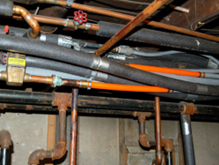
- Replace building plumbing and older plumbing fixtures, particularly where the drinking water taps are located. The newer taps are mostly lead free, but not 100%. In older homes with copper pipes and lead solder, consider renewal and replacement of plumbing.
- Utilize in-house Point-of-Entry (POE) or Point-of-Use (POU) treatment system that will remove the lead from the Drinking Water prior to consumption. The POE device would treat the entire home, the POU device would treat only the water at the specific tap. See page 31 of the Health Canada Technical Guidance document on Lead for details. The most readily available and applicable technology would be a 5-stage reverse osmosis treatment system that would be a separate tap for consumption. The 5-stage process includes the Reverse Osmosis process and also should include an activated carbon filter that has capacity to adsorb the lead in drinking water. These units can be purchased locally for in the range of $500 from water treatment stores in Kelowna. Installation can be by owner or by contractor for additional cost.
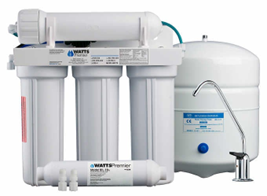
The decision on which approach to take will vary depending on household, income, risks, and priorities of the customer.
Flint, Michigan - Lead in their Water - A Lesson Learned
One of the most significant events regarding Lead in the past 10 years occurred in Flint, Michigan. The authorities in that city changed water sources which resulted in a much more corrosive water being provided to the City. The result was that the corrosive water had an immediate effect in that there were much higher lead levels in the water. The authorities did not disclose this information. As a result there were investigations and charges made to those persons that were responsible for the safety of the water. This event triggered higher awareness about lead for water utilities throughout North America.
Flint Michigan - Failure in Flint – Inside the Water Crisis
Run time 50 minutes -
Comprehensive reporting on how the water utility failed their customers.
